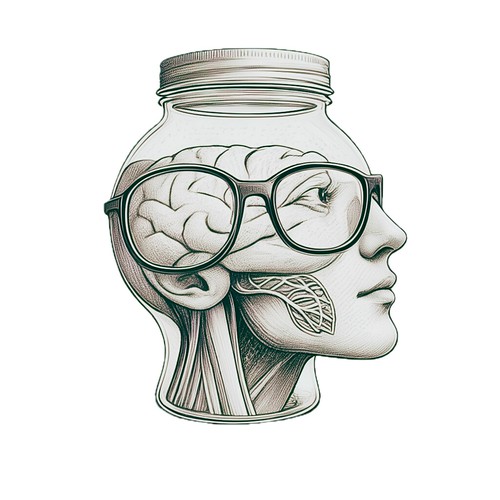Bleak
If you've watched the dystopic I am Legend, you'll find Margaret Atwood's Oryx and Crake familiar, but not less entertaining.
It's a story of a post-apocalytpic world where everything has crumbled. Weeds grow on asphalt roads; vines cover what used to be windows; and skulls of dead people lie scattered everywhere. All these because the entire human race has been wiped out by a deadly virus.
In the midst of the chaos, one human has survived: Snowman. His recollections of the past form the backbone of the novel. Here, Margaret Atwood excels in weaving episodes that hop from different time periods, giving the reader bits and pieces of information that sow seeds of curiosity—this she does for the first 11 chapters. Right after that, she ties all the answers to those questions, and this is where the novel gets really gripping. Everything falls into place.
The general theme is not unlike The Handmaid's Tale, the first Atwood novel I've read: the future looks hopeless. If she truly believes in what she writes (regardless if it's fiction), then she may not be a very optimistic person. The book is depressing, the supreme quality that makes it a page-turner. Who' d say it's not depressing to be alone—literally—in a world where genetically modified creatures prowl around, waiting to devour you? Atwood makes it sufficiently clear that the greatest curse in being alone is that you cannot escape your thoughts—those stories of previous loves, friendships, and family.
They haunt you.
The book indirectly discusses present-day problems we can't overlook. Atwood accomplishes this by way of exaggeration. Among these issues include the ethics of genetic engineering, internet pornography, and child trafficking. It's amazing how these things reinforce one's notion of the human condition. That of depravity.
It's a story of a post-apocalytpic world where everything has crumbled. Weeds grow on asphalt roads; vines cover what used to be windows; and skulls of dead people lie scattered everywhere. All these because the entire human race has been wiped out by a deadly virus.
In the midst of the chaos, one human has survived: Snowman. His recollections of the past form the backbone of the novel. Here, Margaret Atwood excels in weaving episodes that hop from different time periods, giving the reader bits and pieces of information that sow seeds of curiosity—this she does for the first 11 chapters. Right after that, she ties all the answers to those questions, and this is where the novel gets really gripping. Everything falls into place.
The general theme is not unlike The Handmaid's Tale, the first Atwood novel I've read: the future looks hopeless. If she truly believes in what she writes (regardless if it's fiction), then she may not be a very optimistic person. The book is depressing, the supreme quality that makes it a page-turner. Who' d say it's not depressing to be alone—literally—in a world where genetically modified creatures prowl around, waiting to devour you? Atwood makes it sufficiently clear that the greatest curse in being alone is that you cannot escape your thoughts—those stories of previous loves, friendships, and family.
They haunt you.
The book indirectly discusses present-day problems we can't overlook. Atwood accomplishes this by way of exaggeration. Among these issues include the ethics of genetic engineering, internet pornography, and child trafficking. It's amazing how these things reinforce one's notion of the human condition. That of depravity.
Labels: books/reading

0 Comments:
Post a Comment
<< Home